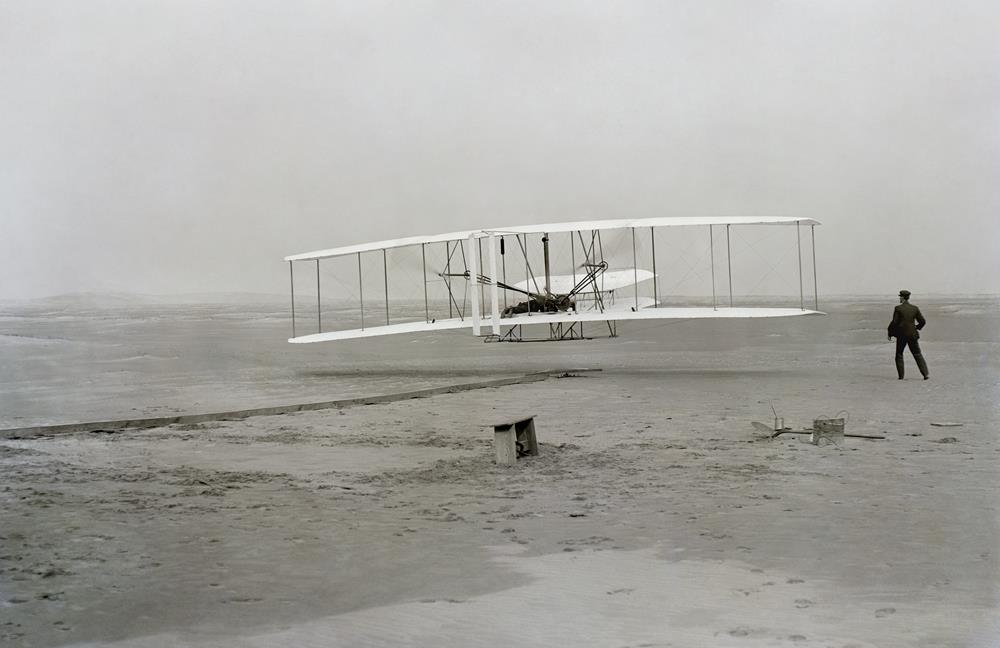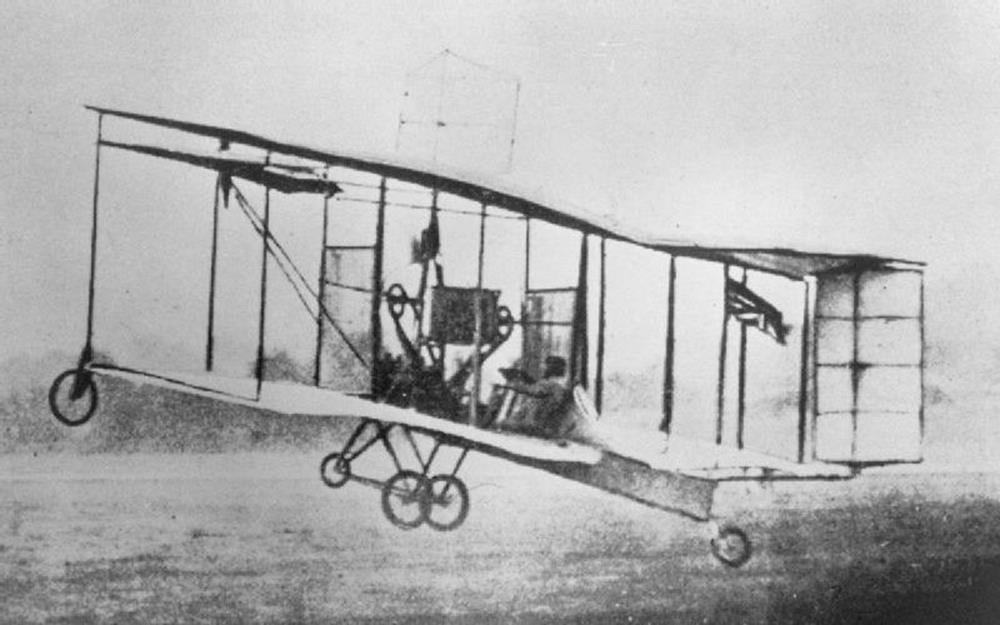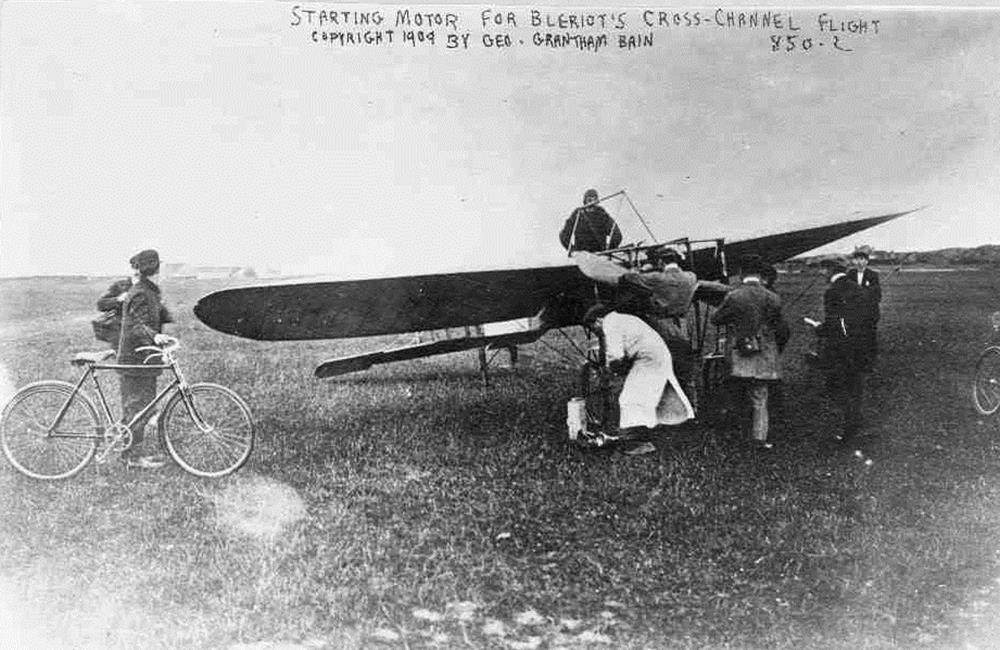Naval Aviation 2 – Aviation Pioneers
| < A Brief History of British Naval Aviation | Δ Index | The Birth of British Naval Aviation > |

On December 17th 1903, Orville and Wilbur Wright made the first controlled, sustained, powered heavier-than-air flight, on a beach four miles south of Kitty Hawk, North Carolina.
That flight lasted 12 seconds, and covered 37 metres. The fourth flight later that day covered 260 metres in 59 seconds.

On October 16th 1908, Samuel Franklin Copy made the first sustained aeroplane flight in Britain, at Laffans Plain, Farnborough. He built his own plane in 1907 at the Army Balloon factory in Farnborough – “The British Army Aeroplane No 1” or “Cody 1.”
The flight was of 464 metres, and ended in a crash – a wingtip touched the ground as Cody attempted to turn and avoid a tree.

On July 25th 1909, Louis Bleriot made the first powered flight across the English Channel, from Calais to Dover.
The flight lasted 36 minutes and 30 seconds.
Although the range of a flight had now been extended, manoeuvring was still a major issue. Even turning an aeroplane was a very difficult exercise. Bleriot crash landed at Dover.
1911 – Scottish aviator W.H. Ewen flew across the Forth from Edinburgh, turned, flew back and landed safely!

Ewen’s flight over the Forth demonstrated that aircraft had become much more manoeuvrable, he was able to fly across the river turn, fly downstream, turn back and then circle to identify a suitable landing field.
| < A Brief History of British Naval Aviation | Δ Index | The Birth of British Naval Aviation > |